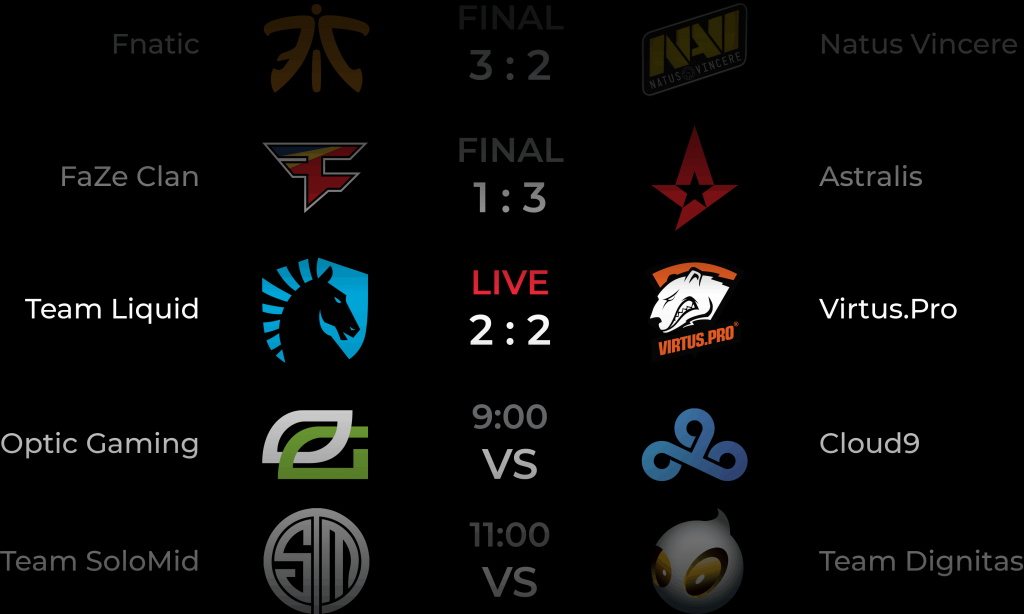Over the last few years, esports has changed from a niche sport to a major sport with a huge fan base. In 2019, the global esports audience is expected to grow to 454 million people worldwide, and the growth will only continue in the coming years.
The Success of 2019 is just the Beginning
During Starladder Major in Berlin, one of this year’s largest esports tournaments, more than 41 million hours of Counter-Strike: Global Offensive (CS: GO) were watched on the live streaming platform Twitch, with StarLadder’s English-language channel peaking at 341K viewers during the finals, where Astralis defeated Avangar. The huge interest in the tournament is just one example of the growing popularity of esports. It is, however, not just in terms of viewership that esports is growing. Today, it has grown to become a billion-dollar industry, and more companies are starting to invest heavily in esports. What continues to attract companies to esports is the characteristics of the esports audience. But what makes this audience so attractive, and what does the future of the esports market look like?
A Young and High-Earning Audience Attracts Companies to Esports
For a long time, the predominant perception of esports fans has been that they are geeky teens who spend most of the day playing and watching video games. Although this misconception is slowly starting to disintegrate, it is still widespread today. In reality, esports fans are, however, a very interesting target group for companies, and the characteristics of the esports audience
1. A Sizable and Growing Fan Base
The sheer size of the audience makes esports an attractive industry. In 2018, Twitch had more viewers than CNN, and according to the market research firm Newzoo, more than 645 million people will be watching esports in 2022. The increasing viewership is one of the main contributing factors to the revenue growth in the market, and with a projected viewership growth rate of more than 14% in the coming years, more and more companies are already starting to see the massive potential in esports.
2. A Young and Attractive Audience
According to Newzoo, 54% of the esports audience is between 21-35, while 27% is 20 years or younger. It is increasingly difficult to reach this specific audience through traditional advertising, and they are less dependent on traditional media. Instead, they rely on digital media, and they demand relevant, updated, and engaging content. Being associated with and creating content about esports is, therefore, a great way of connecting with an audience that is only getting harder and harder to reach.
3. High Purchasing Power
Today, the global average revenue per esports enthusiast is $5.45, up almost +9% from $5.0 in 2018. Although the revenue per esports fan is less compared to supporters of major sports like football and basketball, there is a clear tendency that esports fans are quickly becoming more profitable to invest in! One explanation for the remarkable growth rate is that the esports market is only starting to mature. In the past, opportunities for fans to spend big on esports were limited. With major stadiums being built, a bigger audience, more investors, and a larger range of merchandise available, this will, however, not continue to be the case. In fact, within the foreseeable future, the average revenue per esports enthusiast will most likely be comparable to most major traditional sports.
What does the Future of Esports Look Like ?
Right now, the popularity of esports shows no sign of slowing down. On the contrary, the growth of the esports market is only expected to intensify, both in terms of viewership, investments, revenues, and the
The Global Esports Audience will Continue to Grow
As mentioned, the global esports audience is expected to reach an astonishing 645 million viewers in 2022, and the average revenue per esports enthusiast will continue to grow as well. These are the main factors that esports is a billion-dollar industry today, and the continuing growth will therefore only make the market even more attractive for investors in the future.
Brands already Compete for Attention
As a growing fan base with increased spending power will continue to drive revenue growth on the market, esports will continue to attract new companies in the future. As leagues and tournaments establish larger audiences, new companies will shift their focus towards esports and attempt to monetise the audience. In fact, we are already starting to see this today. Nike, Adidas, and Under Armour battle it out for jerseys, traditional recognised media organisations like ESPN cover esports heavily, and major brands like Sephora, Mastercard and Chipotle are already investing heavily in esports. This is, however, just the tip of the iceberg. In the future, we will see even more investments, as more companies will try to connect with the attractive audience, and the growing interest from established brands outside esports will give credibility and increase awareness about the industry.
Esports will be Recognised as a “real” Sport
For years, there has been an ongoing debate of whether esports is a “real” sport or not. The debate continues today, but as more and more people watch esports, it will eventually be publicly recognised as a “real” sport. Today, 1.8 billion people are aware of esports, up from 1.6 billion in 2016. This number is expected to grow as esports gets more exposure on streaming services like Netflix and with traditional media starting to cover League of Legends, Dota 2 and CS: GO to a greater extent. Furthermore, well-known sports teams are now tapping into the esports market, with football clubs like Manchester City partnering with FaZe Clan and Schalke 04 competing in League of Legends, as just a few examples. This trend of well-known sports teams entering the scene will also increase awareness and acceptance of esports as a legitimate form of mainstream entertainment.
The public recognition has already begun, and today Olympic officials recognise esports as a “real” sport. So, video games being played in the Olympics is not just wishful thinking anymore, but rather a likely scenario.
The Market is far from Saturated
The rapid growth of esports clearly showcases that the market is far from saturated. Right now, it is key for companies to get a head start, by tapping into the market before it is flooded with brands trying to monetise the popularity of esports, and the price of reaching its audience increases. Whether it is betting companies, media organisations or something completely different, what is important is creating original, engaging, and relevant content. It is the actors who can accommodate these needs that will succeed in the esports market. Both now and in the future.






